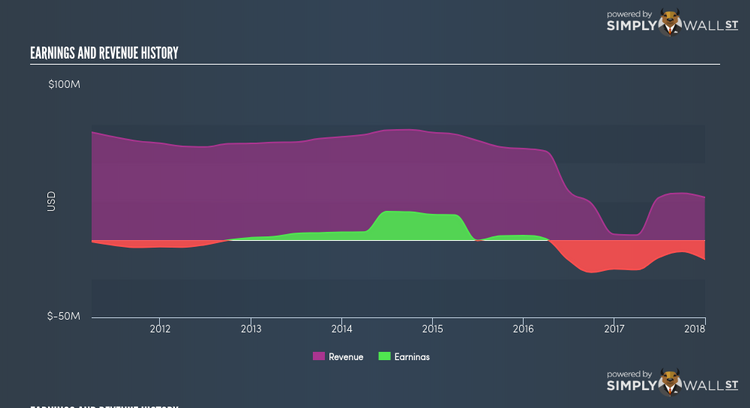What Kind Of Risk Should You Expect For CCUR Holdings Inc (NASDAQ:CCUR)?

If you are a shareholder in CCUR Holdings Inc’s (NASDAQ:CCUR), or are thinking about investing in the company, knowing how it contributes to the risk and reward profile of your portfolio is important. Every stock in the market is exposed to market risk, which arises from macroeconomic factors such as economic growth and geo-political tussles just to name a few. This is measured by its beta. Not all stocks are expose to the same level of market risk, and the market as a whole represents a beta of one. A stock with a beta greater than one is considered more sensitive to market-wide shocks compared to a stock that trades below the value of one.
See our latest analysis for CCUR Holdings
What does CCUR’s beta value mean?
CCUR Holdings’s beta of 0.33 indicates that the company is less volatile relative to the diversified market portfolio. This means that the change in CCUR’s value, whether it goes up or down, will be of a smaller degree than the change in value of the entire stock market index. Based on this beta value, CCUR appears to be a stock that an investor with a high-beta portfolio would look for to reduce risk exposure to the market.
Does CCUR’s size and industry impact the expected beta?
A market capitalisation of US$53.55M puts CCUR in the category of small-cap stocks, which tends to possess higher beta than larger companies. Furthermore, the company operates in the tech industry, which has been found to have high sensitivity to market-wide shocks. Therefore, investors may expect high beta associated with small companies, as well as those operating in the tech industry, relative to those more well-established firms in a more defensive industry. This is an interesting conclusion, since both CCUR’s size and industry indicates the stock should have a higher beta than it currently has. There may be a more fundamental driver which can explain this inconsistency, which we will examine below.
Is CCUR’s cost structure indicative of a high beta?
An asset-heavy company tends to have a higher beta because the risk associated with running fixed assets during a downturn is highly expensive. I examine CCUR’s ratio of fixed assets to total assets to see whether the company is highly exposed to the risk of this type of constraint. Considering fixed assets account for less than a third of the company’s overall assets, CCUR seems to have a smaller dependency on fixed costs to generate revenue. Thus, we can expect CCUR to be more stable in the face of market movements, relative to its peers of similar size but with a higher portion of fixed assets on their books. Similarly, CCUR’s beta value conveys the same message.
What this means for you:
You may reap the benefit of muted movements during times of economic decline by holding onto CCUR. Its low fixed cost also means that, in terms of operating leverage, its costs are relatively malleable to preserve margins. What I have not mentioned in my article here are important company-specific fundamentals such as CCUR Holdings’s financial health and performance track record. I highly recommend you to complete your research by taking a look at the following:
Financial Health: Is CCUR’s operations financially sustainable? Balance sheets can be hard to analyze, which is why we’ve done it for you. Check out our financial health checks here.
Past Track Record: Has CCUR been consistently performing well irrespective of the ups and downs in the market? Go into more detail in the past performance analysis and take a look at the free visual representations of CCUR’s historicals for more clarity.
Other High-Performing Stocks: Are there other stocks that provide better prospects with proven track records? Explore our free list of these great stocks here.
To help readers see pass the short term volatility of the financial market, we aim to bring you a long-term focused research analysis purely driven by fundamental data. Note that our analysis does not factor in the latest price sensitive company announcements.
The author is an independent contributor and at the time of publication had no position in the stocks mentioned.

